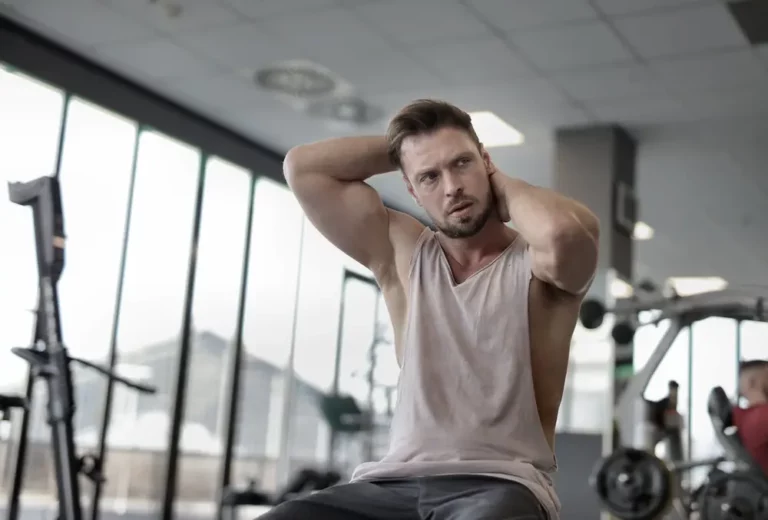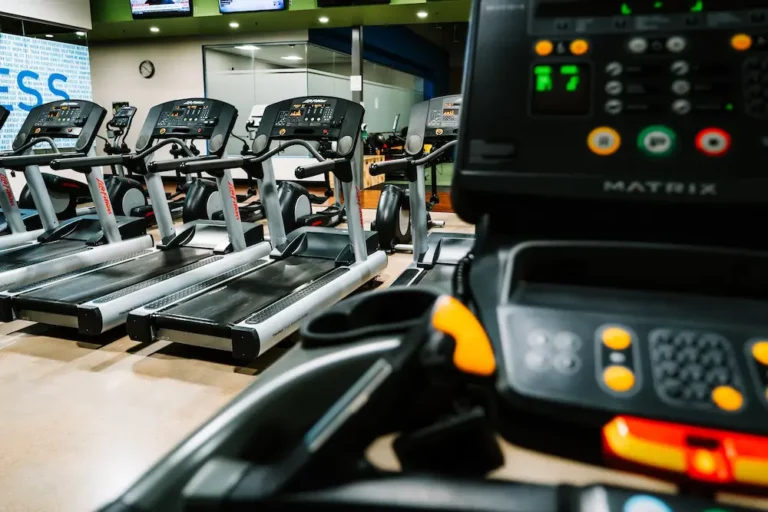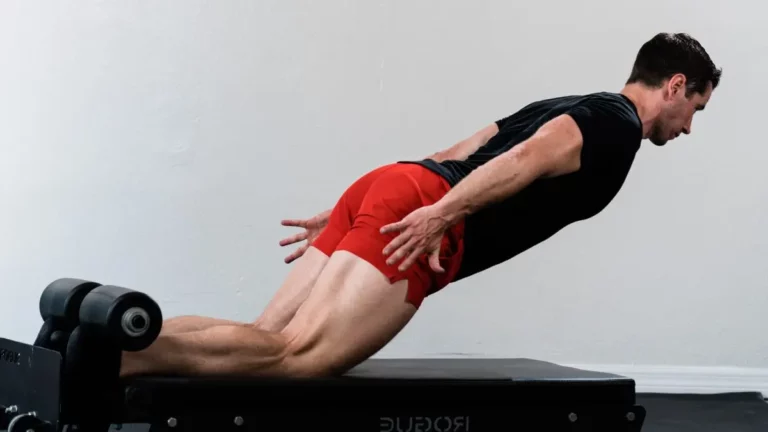Does Punching Your Abs Boost Strength? Truths Unveiled
I’ve always been fascinated by the rigorous training routines of boxers and martial artists, especially when it comes to strengthening their core. You’ve probably seen them too, taking blows to the midsection and seemingly coming out stronger for it. It’s enough to make anyone wonder if there’s a secret to sculpting steel abs hidden in those punches.
So, I decided to dive deep into the question: does punching your abs really make them stronger? It’s a topic surrounded by myths and misconceptions, and I’m here to separate fact from fiction. Let’s explore what really happens when you take a punch to the gut and whether it’s a shortcut to an ironclad core.
The Myth of Punching Abs for Strength
Let’s dive deeper into the realm of fitness strategies that spark our curiosity. Among the myriad of techniques out there, punching abs has carved its niche, largely thanks to the cinematic portrayal of hardy fighters. But, when I peel away the layers of its visual appeal, I’m prompted to question the efficacy of this practice for building strength.
Firstly, it’s crucial to understand what punching the abs entails. This method involves taking controlled punches to the stomach during exercises like sit-ups, with the intention of hardening the core. The logic behind this is to increase peak muscle activation and enhance the mind-muscle connection. By focusing intensely on the muscles being worked, it’s believed that you can further ramp up muscle activity.
However, it’s essential to distinguish muscle activation from muscle strengthening. Increased activation does not automatically translate to increased strength or fat loss. In fact, strengthening the core relies heavily on progressive overload and comprehensive core training routines rather than isolated practices like abs punching.
Moreover, I’ve come to realize that focusing solely on such a method may divert attention from other critical aspects of fitness. Nutrition, metabolic rate, and a holistic training regimen play integral roles in achieving a strong, sculpted core. Punches alone won’t cut it.
I recall seeing routines that pledge to induce muscle failure faster than traditional exercises. And yes, while this sounds promising for those chasing quick results, I wonder if the potential risks outweigh the benefits. The idea of someone willingly taking blows to their midsection feels counterintuitive, considering the valuable organs housed just beneath those muscles.
Understanding Abdominal Muscles and Strength Training
Before delving deeper into whether punching your abs makes them stronger, it’s essential to understand the anatomy of the abs and the principles behind effective abdominal strengthening. This understanding lays the foundation for identifying the most efficient ways to enhance core strength and resilience.
Anatomy of the Abs
The abdominal muscles, often referred to as the “abs,” are a complex group of muscles that play a crucial role in the overall stability of the body. At the forefront is the rectus abdominis, the muscle that creates the coveted six-pack appearance when toned and defined. This muscle extends from the ribs to the pelvis, aiding in spinal flexion and stabilization.
Beneath the surface, the transverse abdominis acts like a corset, encircling the trunk and providing vital support to the lower back and core area. Along the sides, the internal and external obliques allow for rotation and lateral movement, adding to the core’s dynamic capabilities. Understanding this intricate muscular system is vital for targeting these areas effectively during workouts.
Principles of Effective Abdominal Strengthening
Strengthening the abdominal muscles effectively requires more than isolated exercises; it demands a holistic approach. Key principles include:
- Progressive Overload: Just like any other muscle group, the abs require progressive overload to grow stronger. This can mean increasing the resistance, changing the exercise difficulty, or modifying the volume and intensity of workouts.
- Core Stability: Strengthening the abs isn’t just about aesthetic appeal; it’s about enhancing core stability. Exercises that engage multiple muscle groups and mimic real-life movement patterns are crucial.
- Consistency: For tangible results, consistency in training is non-negotiable. A well-rounded routine targeting the entire core, performed regularly, is the key to building strength and endurance.
- Variety: Mixing up your workout routine prevents muscle adaptation and ensures all parts of the abdominal muscles are challenged. Incorporating exercises like planks, Russian twists, and leg raises can provide comprehensive core engagement.
- Rest and Recovery: Muscles need time to repair and grow stronger. Ensuring adequate rest between intense abdominal workouts is essential for preventing injury and promoting muscle development.
Understanding these principles clarifies why simply punching the abs might not be the most effective strategy for strengthening them. Instead, a well-rounded approach addressing these key areas offers a more promising route to achieving a strong, stable core.
Analyzing the Impact of Punching on Abs
When we talk about enhancing core strength, the unconventional method of punching the abs often gets mentioned in fitness circles. But what really happens when you introduce this kind of physical stimulus to your abdominal area? Let’s dive into the immediate effects on muscle activation and the long-term impact this practice might have on abdominal strength.
Immediate Effects on Muscle Activation
From the moment a punch lands on the abs, there’s an undeniable spike in muscle activation. Essentially, the body’s natural reaction to an external force is to brace itself, which in this case, means your abdominal muscles tighten up to absorb the impact. This sudden tightening isn’t just a momentary reaction; it’s a form of isometric contraction that can indeed stimulate the muscles.
In my experience with incorporating punching into abdominal workouts, I’ve noticed that the sharp, sudden impacts force the muscles to activate in a way that regular crunches or planks might not. This could potentially enhance muscle activation and endurance over short bursts of time. However, it’s crucial to understand that muscle activation alone doesn’t translate directly to muscle growth or fat loss. It’s just one piece of the puzzle.
Long-Term Impact on Abdominal Strength
When it comes to the long-term impact of regularly getting punched in the abs, the conversation shifts significantly. Building true abdominal strength requires more than just activating the muscles; it necessitates a comprehensive approach that includes progressive overload, dietary considerations, and consistent, varied training.
From my journey and research, punching the abs can condition the body to become more resilient to blows, possibly improving pain tolerance and enhancing the protective tension in the abdominal wall. However, without incorporating other forms of core exercises that promote hypertrophy and without addressing nutritional aspects, expecting significant strength gains from punching alone might not be realistic.
Moreover, the risk factors associated with repeated blunt force to the abdominal area can’t be overlooked. The potential for bruising, internal injury, or inadvertently causing harm to the underlying organs presents a significant counterargument to the practice, especially for non-professionals or those without proper guidance.
Risks and Considerations
Potential for Injury and Adverse Effects
While the idea of punching your abs may sound like a straightforward path to a chiseled midsection, it’s crucial to understand the potential risks involved. The immediate concern that springs to mind is the risk of injury. Repeated blunt force to the abdominal area, even in the context of training, can lead to bruising, internal injuries, or worse, if not executed correctly. It’s not just the visible injuries; the internal damage can be significantly more severe.
There’s also the aspect of adverse effects on the body. Unintentionally, one could cause harm to internal organs that are protected by abdominal muscles. The kidneys, spleen, and liver – all located within striking range – could potentially be affected by improper technique or excessive force. Another risk includes the development of hernias, which can occur if the abdominal wall is weakened over time through continuous, forceful impacts.
Safety Precautions When Practicing Abdominal Punches
Awareness and appropriate precautions are paramount when including abdominal punches in your fitness routine. Firstly, it’s advisable to consult with a fitness or medical professional before incorporating this kind of exercise, especially if you’re new to fitness or have existing health concerns. Their guidance can ensure that you approach this method safely, tailoring it to your body’s capabilities.
When practicing abdominal punches, always start slowly and with less intensity to gauge how your body reacts. Gradually increase the force only if you’re comfortable and not experiencing any pain. Implementing proper form is non-negotiable; incorrect posture or technique could amplify the risk of injury. If possible, working under the supervision of a trained professional can provide immediate feedback and corrections.
It’s also essential to listen to your body’s signals. Pain, discomfort, or any unusual symptoms should prompt you to stop immediately. The adage “No pain, no gain” doesn’t apply here; safety should always take precedence. By following these precautions and approaching abdominal punches with mindfulness and care, you can aim to enjoy the potential benefits while minimizing the risks.
Effective Alternatives to Punching for Stronger Abs
Proven Abdominal Exercises for Strength and Tone
When I’m aiming for stronger and more toned abs, I’ve found that certain exercises are far more effective than punching my abs could ever be. Planks, for instance, are fantastic because they engage not just the abdominal muscles but also the back, shoulders, arms, and legs. It’s a full-body stabilizer that specifically targets core strength and endurance. I usually start with 30 seconds and work my way up to a minute or more.
Then there’s the classic sit-up. Unlike crunches, sit-ups engage more muscles, promoting better posture and flexibility. I make sure my form is correct to avoid strain on my neck or back. By incorporating different types, like twisting sit-ups, I can also target my obliques, which are crucial for core stability and side muscle definition.
Leg raises have also been a game-changer for me. They’re incredibly effective at engaging the lower abs, a notoriously hard area to tone. I start lying flat on my back and raise my legs without bending the knees, then slowly lower them back down. It’s challenging, but the results are worth it.
Role of Nutrition and Overall Fitness in Developing Strong Abs
I’ve learned that no matter how hard I train, I can’t out-exercise a bad diet. Eating a balanced diet with the right mix of protein, carbohydrates, fats, and vegetables is essential for building stronger, more defined abs. Protein is particularly important because it aids in muscle repair and growth. I make sure to include protein-rich foods like chicken, fish, tofu, and legumes in my meals.
Hydration is another key factor that I used to overlook. Drinking enough water boosts metabolism, which helps in fat burning and revealing those sought-after abs. Additionally, staying hydrated ensures that my muscles are functioning at their peak during workouts.
Lastly, overall fitness plays a significant role. Incorporating cardio into my routine not only helps in burning fat but also improves heart health, which is crucial for endurance and stamina during abdominal workouts. High-intensity interval training (HIIT) has been particularly beneficial for me because it’s a great way to elevate my heart rate quickly, burn calories, and increase metabolism. That way, I’m not just working on my abs but enhancing my overall fitness and health.
By combining these exercises with proper nutrition and a balanced approach to fitness, I’ve seen significant improvements in my abdominal strength and appearance without ever needing to punch my abs. It’s a more holistic and safer approach that ensures I’m not just chasing aesthetic goals but also prioritizing my health and well-being.
Conclusion: Understanding What Really Works for Ab Strength
So there we have it. While the idea of punching your abs might seem like a quick path to strength, it’s clear that there’s no shortcut to real, lasting abdominal muscle development. The insights from fitness professionals and boxers alike underline the need for a balanced, thoughtful approach to training. It’s about more than just enduring hits; it’s about building a foundation with varied exercises, proper nutrition, and a commitment to progressive challenges. Remember, achieving strong, functional abs is a journey, not a sprint. And while incorporating some unconventional methods like punches can add to your resilience, they should complement, not replace, a well-rounded fitness routine. Let’s keep pushing the boundaries safely and thoughtfully, always listening to our bodies and aiming for holistic strength.







